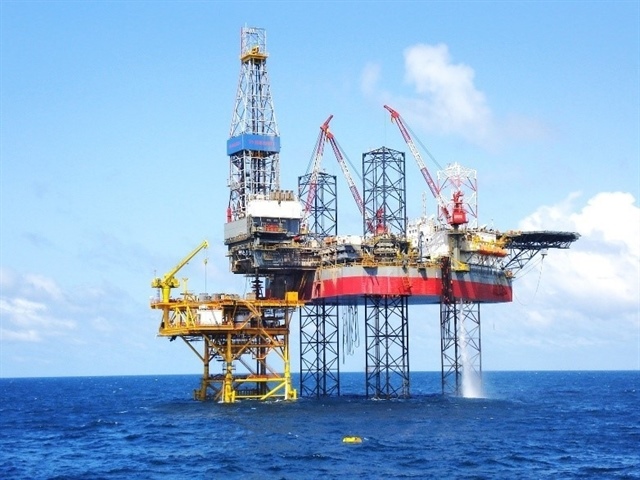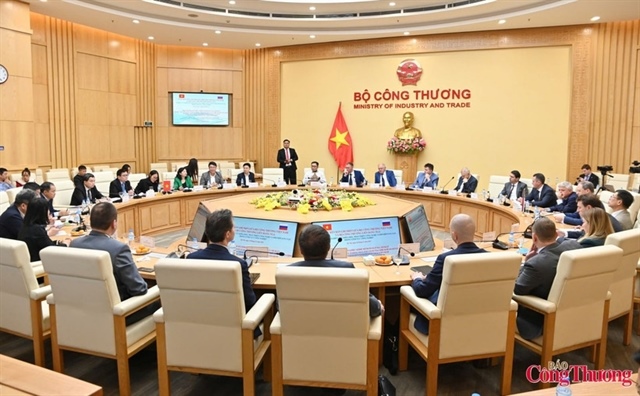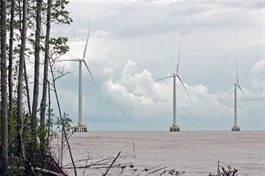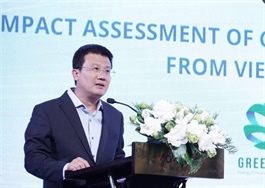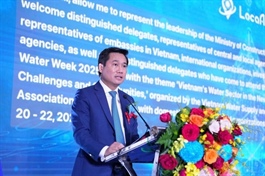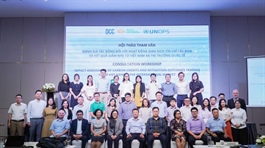Investment in energy - foundation for high and sustainable economic growth
Investment in energy - foundation for high and sustainable economic growth
The Vietnam Institute of Economics and World held a forum to discuss energy development and economic growth in Hanoi on August 21.
At the forum, experts focused on the pivotal role of energy in economic development, as well as the mechanisms needed to accelerate the energy transition process.
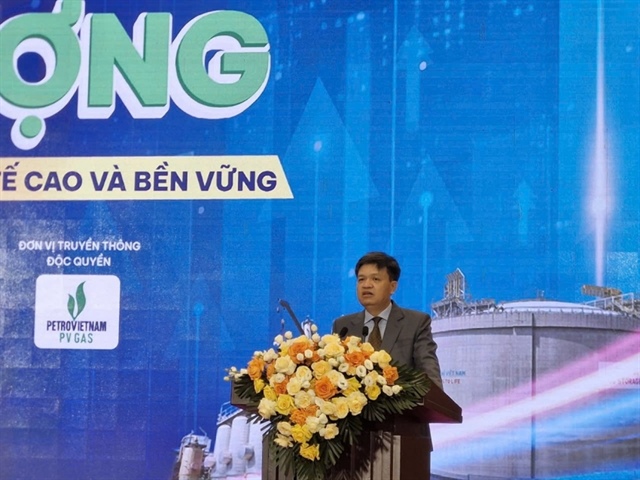
Ta Dinh Thi, Vice Chairman of the National Assembly's Committee on Science, Technology, and Environment |
Ta Dinh Thi, Vice Chairman of the National Assembly's Committee on Science, Technology, and Environment, stated that energy is the “lifeblood” of the economy, forming the foundation of business production, national security, and social life.
He emphasised that in order to ensure fast and sustainable development, the energy sector must be one step ahead, with a growth rate about 1.5 times higher than GDP. If GDP grows by 8 per cent, energy must grow at least 10-11 per cent to meet production, consumption, and innovation needs.
"Amidst climate change and global resource depletion, the energy transition has become inevitable. This presents both challenges and great opportunities for state-owned and private enterprises, large corporations, as well as small- and medium-sized businesses to innovate and compete," Thi said.
Vietnam has committed to net-zero emissions by 2050, thereby driving the restructuring of its energy system towards a greener, smarter, and more sustainable direction. In fact, within just a decade, Vietnam's renewable energy capacity has grown remarkable, from virtually zero to nearly half of the nation's total installed power capacity, making the country a leader in ASEAN in this field.
The recently approved Power Development Plan VIII has clearly set out development targets for each type of energy by 2030. Specifically, onshore and nearshore wind power is projected to reach 26,000-38,600 MW; offshore wind 6,000-17,000 MW; solar power around 46,500-76,000 MW; hydropower about 34,000 MW; along with natural gas and energy storage. The total installed capacity is targeted at 183,000 MW by 2030.
"To achieve this, Vietnam will need enormous investment capital of about $136 billion during 2026-2030. This represents both an opportunity and a challenge for the energy sector and the entire economy," Thi stated.
However, the energy transition also faces many barriers such as inconsistent policies and legal frameworks, cumbersome administrative procedures, and financial, technological, and governance risks. Therefore, this forum served as an opportunity for scientists, and businesses to discuss feasible solutions, particularly in mobilising capital, improving the legal framework, advancing science and technology, promoting digital transformation, and building competitive electricity and carbon credit markets.
"Vietnam is entering a new era, an historic era of energy transition. Success in this process requires strong political will, constant innovation, and the consensus and participation of the political system, business community, and the entire people," Thi stressed. "We need a comprehensive package of solutions, long-term strategic thinking, a market-centred approach, and technology as the core. Institutional transparency, policy reforms, and strong attraction of private and international investment will be the keys to sustainable energy development and to realise Vietnam's aspirations for prosperity and strength.”
Economist Tran Dinh Thien noted that over the past decade, Vietnam has made significant progress. Between 2015 and 2023, the renewable energy sector witnessed a breakthrough thanks to attractive and stable pricing policies. Wind and solar power developed rapidly, significantly contributing to the national grid and projecting the image of a dynamic Vietnam leveraging its natural advantages.
"However, the boom in renewable energy projects has also revealed downsides. Many projects, though heavily invested, faced operational bottlenecks upon completion due to inadequate policies, leading to wasted resources. Inflexible administration, inconsistent planning, and overlapping legal investment procedures create systemic bottlenecks, reducing efficiency and slowing development," he said.
At present, Vietnam's electricity demand up to 2050 has been outlined in scenarios corresponding to different GDP growth paths. With the aspiration to become a high-income country by 2045, Vietnam's economic growth in 2026-2030 must reach 8-10 per cent per year.
"This implies a surge in energy demand, creating huge pressure on capital, technology, and governance capacity," Thien said. "If Vietnam pushes the development of spearhead industries such as semiconductors, artificial intelligence, or the green economy, how will future electricity consumption change? Will the national energy structure need recalibration?"
He cited Taiwan as an example. Heavy investment in the semiconductor industry has made electricity consumption in this sector alone equivalent to around one-tenth of Vietnam's total current electricity demand. This reality shows that developing high-tech industries will pose major challenges for long-term energy planning and supply-demand balance.
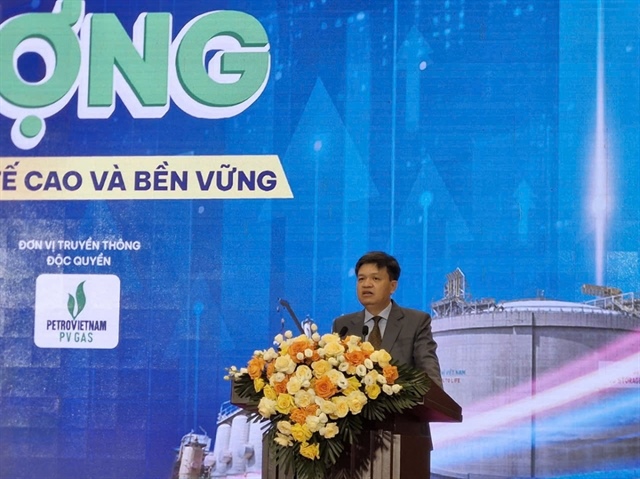
A panel discussion at the conference |
Nguyen Quoc Thap, chairman of the Vietnam Oil and Gas Association, said that developing new and renewable energy is now considered a “golden window” for Vietnam. The government has clearly defined this direction through the National Master Energy Plan and the revised Power Development Plan VIII. In addition, the four key resolutions of the Politburo have been a strong political foundation, while international financial institutions and domestic/foreign businesses increasingly prioritise funding for green energy projects.
However, challenges remain daunting as energy demand rises rapidly while transmission and grid connection infrastructure lag behind; policies are inconsistent and less attractive mechanisms to draw investment into liquified natural gas (LNG), offshore wind, and energy storage.
"High upfront costs and the absence of long-term, stable power purchase agreements hinder businesses' access to financing. Moreover, although many experts have proposed socialising transmission infrastructure investment, no clear regulations have been issued," he said.
"The biggest bottleneck is in the mindset. Investment in energy infrastructure must be considered as important as investment in transport infrastructure. If roads expand development space, electricity, as an essential resource, must be one step ahead to create the foundation for production and social life,” he added.
Additionally, he suggested that the electricity pricing mechanism needs reform towards greater market orientation. Aside from specific groups requiring state support, such as poor households, low-income families, and welfare institutions, the rest should be left to the market.
"The losses of Vietnam Electricity Group (EVN) in recent years stem mainly from the paradox that inputs must be purchased at market prices, while output prices remain controlled," Thap explained. "Thus, the state should only support hazardous groups, while other consumers and producers should negotiate freely on a market basis. This will not only reduce pressure on the state budget but also foster competition, improve investment efficiency, and optimise electricity use."
With the same viewpoint on prioritising energy infrastructure, Ha Dang Son, director of the Centre for Energy and Green Growth Research, stated, “Energy, especially electricity, must be given even higher priority than transport infrastructure. With roads but no electricity, production cannot advance. But with electricity, momentum for industry and social life can emerge immediately.”
He further noted that no single electricity technology is absolutely optimal; each has its own advantages and disadvantages. Solar power is quick to build and cheap but intermittent; wind power has vast potential but depends on international technology; gas and power are stable and efficient in the long term but require large initial investments.
"Therefore, the solution is not to choose the best source but to build a balanced power mix, accompanied by synchronised policies for all four links in the chain: generation – storage – transmission – consumption," he suggested. "Developing generation without transmission, or vice versa, would lead to waste and severely affect national energy security."
- 22:11 23/08/2025




